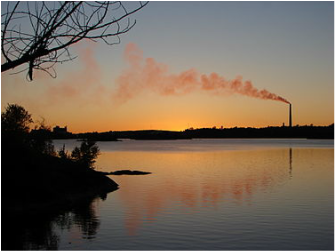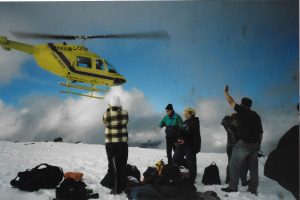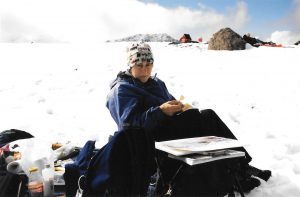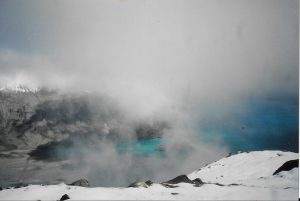Rocks and stones have always intrigued me and studying earth honouring traditions has deepened my relationship with the stone people. Growing up in Sudbury in the 1960’s, we enjoyed lakes, rivers and rocky terrain. Rocks were a beautiful, sculptural part of the landscape and I had no idea the area was considered a barren moonscape.
While we reveled in their beauty, there was no hesitation when it came to blasting huge rock faces to widen the connecting highways or make way for other structures. It’s unlikely anyone thought to commune with the rocks before tearing them up with explosives, let alone ask for permission.
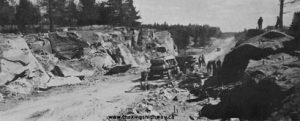
Rock cut construction on the Hwy 69 Extension, one mile north of the Key River Bridge. Photo taken on August 1, 1951. (Photo courtesy of Ontario Ministry of Transportation – © Queen’s Printer for Ontario, 1951)
Sudbury was primarily a mining town although no one in my immediate family mined. Even those of us that loved the rocky terrain were largely ignorant of its life force and innate wisdom. Mother Earth was our play ground to shape and mold as we saw fit or so it seemed.
Thankfully we’re becoming more aware of our role as caretakers of our earth mother who provides for all our needs. I was completely taken aback when I moved to Southern Ontario as a young adult. People kept referring to Sudbury as a barren moonscape that NASA used to practice moon landings. This didn’t make sense to me but to my surprise there was truth in their comments. Click here to see a short video clip Moon Landing Sudbury Ontario early 1970’s
Part of what made Sudbury interesting to space study is that the Sudbury Basin is in fact one of the world’s largest meteorite impact craters. Visiting astronauts studied shatter cones (conical, striated rock chunks) and impact breccia (rock consisting of mineral fragments embedded in natural cement), both of which they subsequently recognized on the moon.
The 1,250 foot Inco Superstack was built in August 1970. The Superstack was built to reduce the impact of waste gases on the local environment. Today I’m happy to say the focus is on reducing the toxic emissions rather than simply diverting them to unsuspecting communities.
Perhaps because of my rocky birthplace, mountains have been a magnetic force in my life. My first big art trip was to the Yukon to paint the pristine shores and mountain ranges there. The highlight for me of this delicious adventure was a savoury day of painting in the glorious and snow-covered mountaintops overlooking Kluane Lake. I was a brand new painter and didn’t really know what I had to say yet. No matter – the mountain had its own magic and continues to inspire me almost 17 years later.
- Helicopter Ride over Fresh Bear Tracks
- Painting on the Mountain Top over Lake Kluane
- Clouds over Lake Kluane
From the exhilarating helicopter ride in to the dazzling display of sunlight and the ever-changing cloud cover that enveloped the mountain and veiled the lake, I was completely enchanted. We circled a few times before landing as the pilot spotted bear tracks in the snow but we were held in the mountain’s firm embrace and felt safe for the time we were there. Since then, I’ve had the privilege of paying homage to mountains throughout North America, in Peru, Greece and Zimbabwe.
Most of the way up, my mantra was “thank-you for getting me this far!” I didn’t think this up on my own – I was inspired by a teaching story Alberto Villoldo told about a group he led to Machu Pichu. One of the women was having a difficult time with a health issue. While most of the group prayed for her strength and for assistance to make it to the top, the shaman and other indigenous helpers offered prayers of gratitude for making it this far. That really stuck with me and I believe it got me to the top and back down.
What was intended to be four to six hours of hiking in daylight, turned into an 11 hour pilgrimage in heavy fog that ended in in darkness for the few of us bringing up the rear. The last hour or so of basically blind hiking meant placing one aching foot in front of the other without being able to see the uneven ground ahead. A lesson in surrender and trust. I remember thinking that if I just kept physically climbing real mountains I might avoid climbing metaphorical mountains in my living.
I now see mountains as wisdom keepers and honour them whenever I can – spiralling full circle back to my mountain and moonscape roots.

